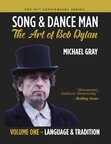Michael Gray's Blog, page 4
April 21, 2015
April 14, 2015
THE WONDERFUL COURTNEY BARNETT
Here's a terrific live version of her fine current single ‘Pedestrian At Best', performed in what a listener to BBC Radio 6 Music called her “racing commentator's delivery":
This is the video of the studio-version single:
And she has such a great band. Her CD The Double EP: A Sea of Split Peas - which combined two earlier EPs, I've Got a Friend Called Emily Ferris (2012) and How to Carve a Carrot into a Rose (2013) - is often played in our house (and car), even though I can only catch a lot of the words if I listen on headphones. They're always worth catching, but I love it just blazing away in the room, because the band is so tremendous - as good as any grunge band that's ever existed, and the freshest around right now.
The single is from her new album Sometimes I Sit and Think, and Sometimes I Just Sit
This is the video of the studio-version single:
And she has such a great band. Her CD The Double EP: A Sea of Split Peas - which combined two earlier EPs, I've Got a Friend Called Emily Ferris (2012) and How to Carve a Carrot into a Rose (2013) - is often played in our house (and car), even though I can only catch a lot of the words if I listen on headphones. They're always worth catching, but I love it just blazing away in the room, because the band is so tremendous - as good as any grunge band that's ever existed, and the freshest around right now.
The single is from her new album Sometimes I Sit and Think, and Sometimes I Just Sit

Published on April 14, 2015 03:21
April 9, 2015
MANCE LIPSCOMB - SONGSTER BORN 120 YEARS AGO TODAY
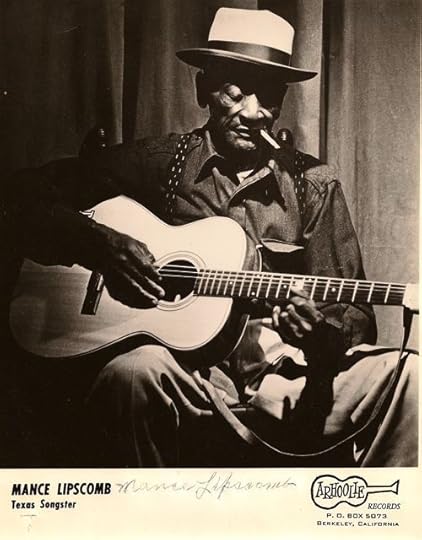
He may be a minor figure in the story of the blues, but he's an interesting one, and one the very young Bob Dylan met, and their repertoires connect in several ways.
Here's my entry on him in The Bob Dylan Encyclopedia:
Lipscomb, Mance [1895 - 1976]In his 1965 book Conversation With the Blues, Paul Oliver makes the point that ‘if the blues, like any folk art or indeed almost any art form, is illuminating in terms of a whole group it is still sung and played by individuals... the individual tends to become submerged... and even when the assessment of the major figures is made, the minor blues singer is forgotten.’To listen to much of Dylan’s work - which at least between his break with ‘protest’ and his conversion to Christianity in every sense put a consistent emphasis on the importance of the individual rather than the mass - is to feel that Dylan has not forgotten the minor blues singer at all. He has listened to the minor figures wherever the somewhat random process of recording folk artists has allowed. We know it from listening to his work.(Where Dylan heard what; the influence of ‘minor figures’ and unknown ones; the communal nature of much blues composition and how this gells with post-structuralist ideas of the unfixed text and the death of the author: all these are big questions, much discussed throughout this book. They are also central preoccupations of Michael Gray’s Song & Dance Man III: The Art of Bob Dylan, Chapter 9, ‘Even Post-Structuralists Oughta Have The Pre-War Blues’.)Dylan learnt and assimilated experience from the older songs and the older singers - singers who, in some cases, were ‘discovered’ or ‘re-discovered’ in the 1960s. Mississippi John Hurt is one example, the stylish and dapper Mance Lipscomb another.Lipscomb was born 9 April, 1895, in Navasota, Texas - and eventually died there (on 30 January, 1976). He was ‘discovered’ in July 1960 by Mack McCormick and Chris Strachwitz and recorded - for the first time - a few weeks later in his two-room cabin, by which time he was in his sixties, though still with a strikingly youthful way of moving around in performance. He had almost a thousand songs he could perform.Dylan met Lipscomb, and we can get an idea of the aura of the man, and thus a hint of the insights he could have given Dylan, from the description of him, and a transcribed conversational fragment, in Paul Oliver’s book. He was a ‘Texas sharecropper and songster with a reputation that extends widely in Grimes, Washington and Brazos counties... A man of great dignity and natural culture... a veritable storehouse of blues, ballads and songs of more than half a century... ’This is Lipscomb talking (the spelling is as in Oliver’s transcript):‘I been playin’ the git-tar now ’bout forty-nine years, and then I started out by myself, just heard it and learned it. Ear music... My pa was a fiddler; he was an old perfessional fiddler. All my people can play some kind of music. Well, my daddy... he played way back in olden days. You know, he played at breakdowns, waltzes, shottishes and all like that and music just come from me... Papa were playing for dances out, for white folks and coloured. He played Missouri Waltz, Casey Jones, just anything you name he played it like I’m playin’ . He was just a self player until I was big enough to play behind him, then we played together... ‘Sugar Babe’ was the first piece I learned, when I was a li’l boy about thirteen years old. Reason I know this so good, I got a whippin’ about it. Come out of the cotton-patch to get some water and I was up at the house playin’ the git-tar and my mother came in; whopped me n’cause I didn’t come back - I was playin’ the git-tar: “Sugar babe I’m tired of you, / Ain’t your honey but the way you do, / Sugar babe, it’s all over now...”’ In Glen Alyn’s I Say Me For A Parable: The Oral Autobiography Of Mance Lipscomb, 1993, Lipscomb talks of encountering Dylan (and of Rambling Jack Elliott first hearing of Lipscomb when Dylan played him a Lipscomb record) but specifies no dates. Lipscomb says Dylan followed him to ‘Berkeley University’ and then ‘from Berkeley to the UCLA… And when I went off a duty he was settin round me, an hear what I was sayin, an pick up a lot of songs. He could imitate. But he wadna playin no gittah. Then. Takin you know, learnin from his head.’ On 18 May 1963, Dylan appeared on the same bill as Lipscomb at the first Monterey Folk Festival.Lipscomb must have been an invaluable contact for Dylan - the one a black Texan with a personal repertoire stretching back to 1908 and incorporating songs a generation or two older than that, the other a white Minnesotan would-be artist of the whole American people born in 1941. Not only could Dylan have gained a knowledge ready to work for him but also, in a specific and personalised testimony, a feeling for the intimacy of connection of words and music in the expression of a spirit and a theme. Lipscomb’s repertoire included ‘Jack O’Diamonds Is A Hard Card To Play’ (he was field-recorded performing it in his home-town area the first time he ever recorded), which is a title-phrase picked up wholesale and retailed by Bob Dylan inside a piece of his own work that is not a blues. It is, in fact, from one of those poems he calls Some Other Kinds Of Songs . . ., published on the back sleeve of the album Another Side Of Bob Dylan. This long and generally inferior poem repeats several times, and then ends with, ‘jack o’ diamonds / is a hard card t’ play.’ Other songs Lipscomb recorded include ‘Baby Please Don’t Go’, ‘You Gonna Quit Me’ (the Blind Blake song on Dylan’s Good As I Been To You, re-titled ‘You Ain’t Gonna Quit Me’ by Lipscomb), ‘Corrina Corrina’, ‘Mama, Let Me Lay It On You’, a song called ‘When Death Comes Creeping In Your Room’ - a title that strongly suggests it may prefigure Dylan’s ‘Watcha Gonna Do’ - and ‘Night Time Is The Right Time’. In the section called ‘Playing For The White Folks’ in the Glen Alyn book, Lipscomb claims that Dylan took ‘Baby Let Me Follow You Down’ from ‘his’ ‘Mama, Let Me Lay It On You’.
[Mance Lipscomb: ‘Jack O’ Diamonds Is A Hard Card To Play’, Navasota TX, summer 1960; Mance Lipscomb Texas Sharecropper & Songster, Arhoolie LP 1001, El Cerrito, CA, 1960. ‘Night Time Is The Right Time’, nia.; Mance Lipscomb Vol. 4, Arhoolie LP 1033, El Cerrito CA, nia.]
Published on April 09, 2015 01:29
February 19, 2015
I'VE BEEN WITH THE PROFESSORS...
I'm delighted to say that last month the University of York conferred the higher doctorate of D.Litt. (Doctor of Letters) on me for the "substantial and original contribution to learning" achieved by Song & Dance Man III: The Art of Bob Dylan. The ceremony, which included the conferral of a good many MAs, MScs and Ph.Ds on people very much younger than me, was on Friday January 23.
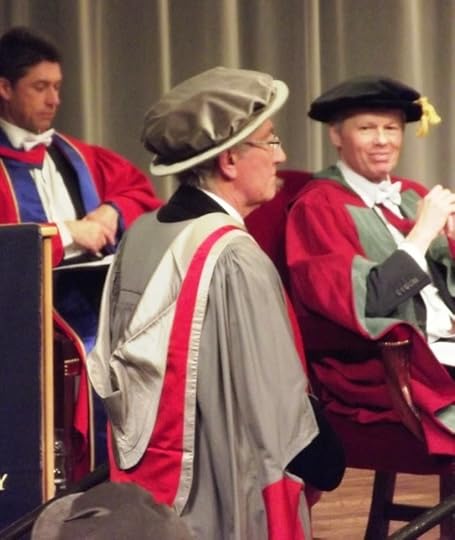 For anybody interested, I've put a few more photos
on my website
.Meanwhile I'm also pleased to say that I have been asked to write the Introduction to a forthcoming book about how and why Dylan is being taught in academia; Professing Dylan is to be published in the US in May and there'll be a launch event at Arkansas State University in Jonesboro AR. The book's contributors include Gordon Ball, James Cody, Nina Goss and Louis Renza.
For anybody interested, I've put a few more photos
on my website
.Meanwhile I'm also pleased to say that I have been asked to write the Introduction to a forthcoming book about how and why Dylan is being taught in academia; Professing Dylan is to be published in the US in May and there'll be a launch event at Arkansas State University in Jonesboro AR. The book's contributors include Gordon Ball, James Cody, Nina Goss and Louis Renza.
 For anybody interested, I've put a few more photos
on my website
.Meanwhile I'm also pleased to say that I have been asked to write the Introduction to a forthcoming book about how and why Dylan is being taught in academia; Professing Dylan is to be published in the US in May and there'll be a launch event at Arkansas State University in Jonesboro AR. The book's contributors include Gordon Ball, James Cody, Nina Goss and Louis Renza.
For anybody interested, I've put a few more photos
on my website
.Meanwhile I'm also pleased to say that I have been asked to write the Introduction to a forthcoming book about how and why Dylan is being taught in academia; Professing Dylan is to be published in the US in May and there'll be a launch event at Arkansas State University in Jonesboro AR. The book's contributors include Gordon Ball, James Cody, Nina Goss and Louis Renza.
Published on February 19, 2015 04:23
December 31, 2014
BOOKS READ THIS YEAR
I don't normally write end-of-year summaries but this time - it's December 31st 2014 as I write - I decided I'd list the books I've read this year, with brief comments. I log them as I go, so I know the list is accurate, though it's nothing special:
CARRY ME DOWN, M.J. Hyland, 2006 a compelling, darkening account of a mentally sick boy THE SHADOW LINE, Joseph Conrad, 1917 one of his seafaring novels; it's short but, like the sea, it deepens as you head through it SAVE ME THE WALTZ, Zelda Fitzgerald, 1932 I thought the first half was awful, but found the second half taut and affecting; its descriptions of a dancer's milieu of hard practicing were intense, almost harrowing, and fully convincing TENDER IS THE NIGHT [revised version], F. Scott Fitzgerald, 1948 read for the first time since the 1960s, and read this time to compare to the Zelda novel; it seemed pallid after hers A SHORT HISTORY OF TRACTORS IN UKRAINIAN, Marina Lewycka, 2005 highly enjoyable, warm and shrewdly done THE PLEASURES OF MEN, Kate Williams, 2012 incompetent, clumsy, shabby GREAT HOUSE, Nicole Krauss, 2010 a terrific writer, but it has a disappointing non-ending NARROW DOG TO CARCASSONNE, Terry Darlington, 2005 it starts out being irritating, by straining for chumminess, but it converted me and I soon found it funny, quirky and clever NORTHANGER ABBEY, Jane Austen, 1803?, a sparky, funny start, but it fizzles out FINISHING TOUCHES, Augustus John, 1964 the last dregs of memoir; cheery pompous windbaggery from an age long over by the time it was published; it claims a rebel's no-nonsense briskness but reeks of the sententious establishment that Mandy Rice-Davies had punctured at the Stephen Ward trial the previous year ONE STEP TOO FAR, Tina Seskis, 2013 unputdownable phony crap COLD EYE OF HEAVEN, Christine Dwyer Hickey, 2011 an absolutely wonderful novel: find it and read it SENSE & SENSIBILITY, Jane Austen, 1811 a pleasure to re-rea but unsatisfying afterwards PROPERTY, Valerie Martin, 2003 dodgy Deep South gothic, with plot and a surprise angle but oddly blank writing THE ROAD HOME, Rose Tremain, 2007 substantial, styleless, humane A DELICATE TRUTH, John le Carré, 2013 a curate’s egg but highly page-turnable A DEBATABLE LAND, Candia McWilliam, 1994 poetic soup; pointless in the end PLAINSONG, Kent Haruf, 1999 a touching, modest novel of American small-town elegaic simplicity ANNA KARENINA, Leo Tolstoy, 1877 another re-read; absorbing as story, as history and as novelcraft, but much of the last 25% is weighed down by his dodgy philosophising THEY CAME TO BAGHDAD, Agatha Christie, 1951 one long, silly special-plead THE CHILD IN TIME, Ian McEwan, 1987 beautifully, skilfully written; absorbing A MAN FROM THE NORTH, Arnold Bennett, 1898 admirable novel from much-underrated author; desolate ending THE DRIVER’S SEAT, Muriel Spark, 1970 apparently her own favourite novel; I found it the daftest fiction possible, as if written by an alien THE BIG KILL, Mickey Spillane, 1951 crass, moralistic, riddled with coyness pretending to be bluntness, and a predictable villain’s identity; but it evokes a highly atmospheric noir city and is an uncanny period piece THE HOTEL, Elizabeth Bowen, 1927 thrilled to have found her: a great writer THE RIDDLE OF THE SANDS, Erskine Childers, 1903 compellingly written if detail-clogged; highly distinctive; with a curiously bathetic climax RESENTMENT, Gary Indiana, 1997 unique (though at first it reminded me of Last Exit to Brooklyn), beautifully written, huge, sustained, vivid, sordid, humane: a really extraordinary novel THE PRIVATE PATIENT, P.D. James, 2008 badly written, tiresome, dull, inept.
CARRY ME DOWN, M.J. Hyland, 2006 a compelling, darkening account of a mentally sick boy THE SHADOW LINE, Joseph Conrad, 1917 one of his seafaring novels; it's short but, like the sea, it deepens as you head through it SAVE ME THE WALTZ, Zelda Fitzgerald, 1932 I thought the first half was awful, but found the second half taut and affecting; its descriptions of a dancer's milieu of hard practicing were intense, almost harrowing, and fully convincing TENDER IS THE NIGHT [revised version], F. Scott Fitzgerald, 1948 read for the first time since the 1960s, and read this time to compare to the Zelda novel; it seemed pallid after hers A SHORT HISTORY OF TRACTORS IN UKRAINIAN, Marina Lewycka, 2005 highly enjoyable, warm and shrewdly done THE PLEASURES OF MEN, Kate Williams, 2012 incompetent, clumsy, shabby GREAT HOUSE, Nicole Krauss, 2010 a terrific writer, but it has a disappointing non-ending NARROW DOG TO CARCASSONNE, Terry Darlington, 2005 it starts out being irritating, by straining for chumminess, but it converted me and I soon found it funny, quirky and clever NORTHANGER ABBEY, Jane Austen, 1803?, a sparky, funny start, but it fizzles out FINISHING TOUCHES, Augustus John, 1964 the last dregs of memoir; cheery pompous windbaggery from an age long over by the time it was published; it claims a rebel's no-nonsense briskness but reeks of the sententious establishment that Mandy Rice-Davies had punctured at the Stephen Ward trial the previous year ONE STEP TOO FAR, Tina Seskis, 2013 unputdownable phony crap COLD EYE OF HEAVEN, Christine Dwyer Hickey, 2011 an absolutely wonderful novel: find it and read it SENSE & SENSIBILITY, Jane Austen, 1811 a pleasure to re-rea but unsatisfying afterwards PROPERTY, Valerie Martin, 2003 dodgy Deep South gothic, with plot and a surprise angle but oddly blank writing THE ROAD HOME, Rose Tremain, 2007 substantial, styleless, humane A DELICATE TRUTH, John le Carré, 2013 a curate’s egg but highly page-turnable A DEBATABLE LAND, Candia McWilliam, 1994 poetic soup; pointless in the end PLAINSONG, Kent Haruf, 1999 a touching, modest novel of American small-town elegaic simplicity ANNA KARENINA, Leo Tolstoy, 1877 another re-read; absorbing as story, as history and as novelcraft, but much of the last 25% is weighed down by his dodgy philosophising THEY CAME TO BAGHDAD, Agatha Christie, 1951 one long, silly special-plead THE CHILD IN TIME, Ian McEwan, 1987 beautifully, skilfully written; absorbing A MAN FROM THE NORTH, Arnold Bennett, 1898 admirable novel from much-underrated author; desolate ending THE DRIVER’S SEAT, Muriel Spark, 1970 apparently her own favourite novel; I found it the daftest fiction possible, as if written by an alien THE BIG KILL, Mickey Spillane, 1951 crass, moralistic, riddled with coyness pretending to be bluntness, and a predictable villain’s identity; but it evokes a highly atmospheric noir city and is an uncanny period piece THE HOTEL, Elizabeth Bowen, 1927 thrilled to have found her: a great writer THE RIDDLE OF THE SANDS, Erskine Childers, 1903 compellingly written if detail-clogged; highly distinctive; with a curiously bathetic climax RESENTMENT, Gary Indiana, 1997 unique (though at first it reminded me of Last Exit to Brooklyn), beautifully written, huge, sustained, vivid, sordid, humane: a really extraordinary novel THE PRIVATE PATIENT, P.D. James, 2008 badly written, tiresome, dull, inept.
Published on December 31, 2014 10:06
December 12, 2014
SHADOWS IN THE NIGHT
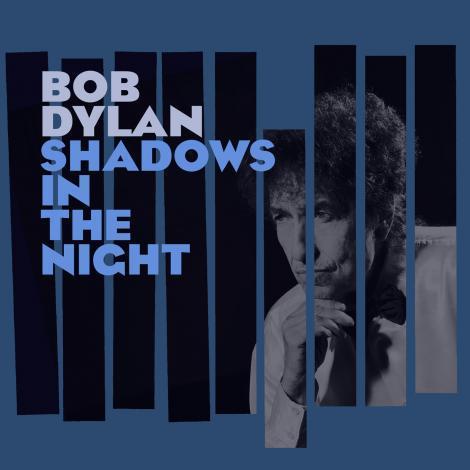 This is the tracklist for Bob Dylan's album Shadows In The Night (a title that surely falls kerplunk straight into parody):
This is the tracklist for Bob Dylan's album Shadows In The Night (a title that surely falls kerplunk straight into parody):1. I’m a Fool to Want You
2. The Night We Called It a Day
3. Stay With Me
4. Autumn Leaves
5. Why Try to Change Me Now
6. Some Enchanted Evening
7. Full Moon and Empty Arms
8. Where Are You?
9. What’ll I Do
10. That Lucky Old Sun.
February 3, 2015, has been announced as the release date. The statement from Bob on bobdylan.com is as enticing as it could be. Aside from the unfortunate "me and my band" which for two good reasons should be "my band and I", he still has a way with words:
“It was a real privilege to make this album. I've wanted to do something like this for a long time but was never brave enough to approach 30-piece complicated arrangements and refine them down for a 5-piece band. That's the key to all these performances. We knew these songs extremely well. It was all done live. Maybe one or two takes. No overdubbing. No vocal booths. No headphones. No separate tracking, and, for the most part, mixed as it was recorded. I don't see myself as covering these songs in any way. They've been covered enough. Buried, as a matter a fact. What me and my band are basically doing is uncovering them. Lifting them out of the grave and bringing them into the light of day.”
I'm delighted to learn of the inclusion of 'Some Enchanted Evening' and 'That Lucky Old Sun' and hopeful that the rest will be less dull than 'Full Moon and Empty Arms'.
In the case of 'I'm A Fool To Want You' he's treading not merely in Sinatra's footsteps but in Billie Holiday's too. The film 'The Night We Called It A Day' sounds more interesting than the 1941 song: the story is that "Frank Sinatra (Dennis Hopper) and his entourage become virtual prisoners in their hotel after he insults an Australian reporter during a 1974 tour." As Dylan has shown in recent concert encores, 'Stay With Me' is a fine song, and strikingly reminiscent of some of his own Christian material. 'Autumn Leaves' started out in French as 'Les Feuilles Mortes' ("the dead leaves" - this less "poetic" lyric by the poet by Jacques Prévert) and has been covered by everyone from Edith Piaf (bilingually) to Eric Clapton, though never more solemnly than by Yves Montand .
'Why Try to Change Me Now' is yer typical Sinatra-does-sophisticated-weariness-with-a-touch-of-whimsy, but includes a line I look forward to hearing Bob sing: "Why can't I be more conventional?" The Sinatra version of 'Where Are You' shows his voice at its non-swinging peak, though he can't escape the song's essential dreariness; and 'What’ll I Do' (what a lot of questions without question-marks, according to bobdylan.com), an Irving Berlin song from 1924, is a rather more delicate and tender thing, at least on the earlier of Mr. Frank's two recordings (1947). There's a Rosemary Clooney version that has already saved Bob the trouble of stripping away and replacing that 30-piece orchestra - it has just a guitar - and this is replicated on the Julie London version .
Regardless, I've been wanting to hear Bob sing 'Some Enchanted Evening' since about 1970 - and indeed that's the year I wish he'd recorded it. (It was once rumoured that he had.) That's the Bob Dylan voice I'd like to have heard him sing it with. As for 'That Lucky Old Sun', well, it's a gem that many people have polished, including Bob. According to bobdylan.com he has performed it 27 times, though never more recently than the short version done in California in 2000 . He first performed it at Farm Aid in 1985. I always love it, but I'm specially keen on the version from Madison Wisconsin from November 5, 1991 (a great concert altogether, and one that included a song I've often gone on about, 'You Don't Know Me'). There are other, striking versions galore: not least those by Big Mama Thornton and several by Jerry Lee Lewis, this included . The most delightfully wacky version - though wacky isn't always what's wanted - is surely that by the venerable lunatic Lee Perry , who has re-named it and claimed composer credit.
There are many Dylan eras I prefer to the present one - many voices, many bands, many styles - but, as he sang on his last great album, "We'll just have to see how it goes".
Published on December 12, 2014 07:07
December 11, 2014
SAM COOKE - 50 YEARS GONE
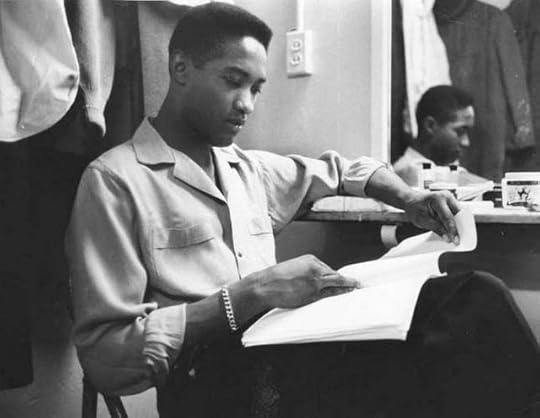
A sobering fifty years after Sam Cooke's untimely death, I mark this anniversary - December 11 - by re-publishing the entry on Sam in The Bob Dylan Encyclopedia:
Cooke, Sam [1931 - 1964]Sam Cook was born 22 January 1931 in Clarksdale, Mississippi, but grew up in Chicago, one of eight children of a Baptist preacher; they formed the Singing Children when he was nine. Later he moved over to the Highway QCs and then replaced R.K. Harris as lead tenor of the Soul Stirrers. With this innovative and contemporary gospel group he began recording in 1951 (though his singing at this point is often overrated: his version of Thomas Dorsey’s great song ‘Peace In The Valley’, pallid and unmemorable, cannot compare with those by ELVIS PRESLEY and LITTLE RICHARD). He ‘went secular’ in 1957, becoming Sam Cooke and starting a long and splendid run of hits, almost all his own compositions, many of which have been covered time and again by artists of the stature of VAN MORRISON. He was a consummate vocalist and a bright, lithe, sexy young man, whose TV appearances helped make black sexuality visible to young white America. He may have learnt his trade in gospel but church-going modesty was not his style.Sam Cooke was very popular but never popular enough. Most of his work is of undimmed excellence: great records by a terrific songwriter and a masterful soul singer of panache, integrity and expressive generosity. In 1960-63 he was in his prime, not least in live performance (try One Night Stand: Sam Cooke Live At The Harlem Square Club, 1963). By the end of 1963, Cooke had notched up eighteen Top Thirty hits since 1957; but pop success was not enough. Earlier that year he had heard Bob Dylan’s ‘Blowin’ In The Wind’ and is reported to have felt shaken that it had been ‘a white boy’ who had written so potent a song - a song that eloquently, if implicitly, addressed the urgent issues of political struggle that so deeply involved his own race. He began performing the Dylan song himself (a version is captured on the album Live At The Copacobana, 1964), but his more profound response was to write the moving, thoughtful and dignified ‘A Change Is Gonna Come’ (originally called ‘My Brother’) which he recorded on January 30, 1964. Despite the quality of the song and Cooke’s recording of it, it was slipped out as an album track (on Ain’t That Good News) and its release as a single was long delayed. On December 11, 1964, Cooke died after being shot in unclear circumstances in an LA motel. He was 33 years old. Two weeks later, and with one verse edited out, ‘A Change Is Gonna Come’ was released… as the B-side of ‘Shake’.Dylan mentions the song in Chronicles Volume One; the context is complex but this is what he writes: ‘Sometimes you know things have to change, are going to change, but you can only feel it - like in that song of Sam Cooke’s, “Change Is Gonna Come”…’ And in an interview in 2001, he reveals an awareness of Cooke’s early gospel group the Highway QCs, recalling that when he was ‘12 years old, listening to the radio… at midnight the gospel stuff would start, and so I got… to be acquainted with the Swan Silvertones and the Dixie Hummingbirds and, you know, Highway QCs…’Dylan cut a version of Cooke’s ‘Cupid’ with GEORGE HARRISON in a New York City studio in May 1970 (which would have been effective had Dylan remembered more than a handful of the words) and attempted Cooke’s hit ‘Chain Gang’ at March and April 1987 studio sessions for the Down In The Groove album. (These remain uncirculated.) ‘A Change Is Gonna Come’ was revisited by THE BAND on their Moondog Matinee album of oldies in the 1970s, and on Dylan’s 1978 world tour, on which various of his back-up singers were given solo spots (with Dylan and the band playing behind them), CAROLYN DENNIS sang ‘A Change Is Gonna Come’ in Hitler’s old Zeppelinfeld stadium at Nuremberg that July 1 and again at Blackbushe Aerodrome in England two weeks later.Matching song to venue with his usual quiet shrewdness, Dylan finally performed a respectful version of ‘A Change Is Gonna Come’ himself live at the home of early-60s R&B and black aspiration, the Apollo Theater in Harlem, NYC, on March 28, 2004, forty years after the creation of the song for which his own work had been a catalyst. In 2004, Rolling Stone magazine asked 172 prominent music-industry figures, including artists such as JONI MITCHELL, to vote for the all-time 500 Greatest Songs of All Time. Sam Cooke’s ‘Change Is Gonna Come’ came in at no.12 - two places higher than ‘Blowin’ In The Wind’. Dylan, however, was at no.1 with ‘Like A Rolling Stone’.
[The Soul Stirrers: ‘Peace In The Valley’, nia, CD-reissued on Sam Cooke: My Gospel Roots, Xtra 26471, UK, 2005. Sam Cooke: One Night Stand: Sam Cooke Live At The Harlem Square Club, 1963, NYC, 12-13 Jan 1963, RCA PL85181, Rome, 1985; ‘Blowin’ In The Wind’, NYC, 7-8 Jul 1964, Live At The Copacobana, Victor LPM /LSP-2970, NYC, 1964; ‘A Change Is Gonna Come’, 30 Jan 1964, RCA 8486, NYC, 1964. Bob Dylan: ‘A Change Is Gonna Come’, NYC, 28 Mar 2004, broadcast on NBC TV’s program ‘Apollo at 70: A Hot Night In Harlem’, NY, 19 Jun 2004; Chronicles Volume One, 2004, p.61; interview for WTTW-TV, Chicago, 27 Oct 2001. The Band: ‘A Change Is Gonna Come’, Bearsville NY, Mar-Jun 1973, Moondog Matinee, Capitol SW-11214, 1973. Bob Dylan, Rolling Stone poll seen online 7 Aug 2005 at www.rollingstone.com/rs500moretext.]
Published on December 11, 2014 05:29
December 5, 2014
MAGIC MAC
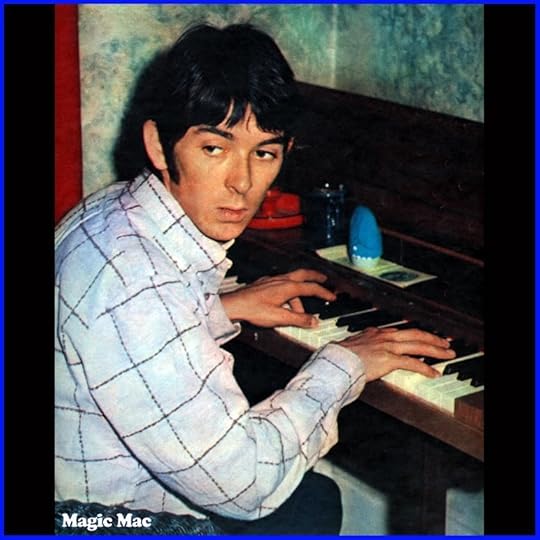 Here's the entry in my book The Bob Dylan Encyclopedia on the late Ian McLagan (updated this morning):
Here's the entry in my book The Bob Dylan Encyclopedia on the late Ian McLagan (updated this morning): McLagan, Ian [1945 - 2014]
Ian ‘Mac’ McLagan was born on May 12, 1945 in Hounslow, Middlesex, England (that is, neither in London nor the countryside out beyond it), grew playing piano, acquiring a Hammond organ and, in an early band, the Muleskinners, backing Howlin’ Wolf, Little Walter and other scary figures on their quick, cheap tours of Britain in the early 1960s.
In 1965 he joined the Small Faces, which turned into the Faces in 1969. The Faces broke up when Ron Wood joined the Rolling Stones; McLagan joined them as a sideman later. In 1984 he was the keyboards player on Bob Dylan’s European tour (Dylan’s first since the semi-gospel tour of 1981), playing from May 28 in Verona, Italy through to Slane, Ireland on July 8: a total of 27 concerts. Thirteen years later, though the detail is murky, he says he was on a session for Time Out Of Mind - including on the song ‘Love Sick’ - but that the versions he played on were not used.
Near the end of the 1990s, McLagan published a well-received memoir, All the Rage, and though the original hardback edition is out of print, the paperback is advertised online with this nicely judged short blurb: ‘The book covers pre-Small Faces days with the Muleskinners, the great days with the Small Faces and the Faces. After that Mac plays with a number of bands including the Rolling Stones, Bonnie Raitt and the ever-cheerful Bob Dylan. He talks about both sides of the Moon (Keith, that is), the losses of Ronnie [Lane] and Steve [Marriott], his fight with drugs and drinks and what Rod Stewart is really like. Furthermore, he gets royalties on this so buy it now.’
The great British music critic Charles Shaar Murray elaborates on this in the review he gave the book in Mojo in January 1999:
‘All The Rage contains an unfeasibly large helping of unforgettable vignettes of the rich and famous at work and play…. Here’s Keith Richards, back in his druggy period [?], shooting himself up in the arse straight through his jeans, and then walking around with syringe still protruding from his butt. Or Bob Dylan replying to a large man introducing himself as “Hello, Bob, I’m Peter Grant. I manage Led Zeppelin”, with a terse “I don’t come to you with my problems.”’
Long married to Kim, the former Mrs. Keith Moon (a man much loved by McLagan even though Moon once paid someone to break his fingers - Pete Townshend paid the same man the same amount again not to), until her accidental death in 2006, Ian McLagan lived in Austin, Texas from 1994 until his death from a stroke on December 3, 2014.
[Ian McLagan, All the Rage: A Rock’n’Roll Odyssey, London: Sidgwick & Jackson, 1998; republished as All the Rage: My High Life with the Small Faces, the Faces and the Rolling Stones, London: Pan, 2000. Time Out Of Mind session claim in interview by Kent H. Benjamin, 5 Dec, 1997 for Pop Culture Press no.44. US, 1998.]
Published on December 05, 2014 03:39
December 1, 2014
A SCOTTISH SONG FOR BOB DYLAN
As we know, Bob Dylan still pulls in young converts in wave after generational wave. Here's one recent testimony to that (sent to me on Twitter, December 1, 2014):
Published on December 01, 2014 10:38
November 24, 2014
ALABAMA SHAKES AGAIN - BUT LIVE
This song comes from the same studio album as their great breakthrough number, 'Hold On'. It's the similarly yet oppositely titled 'Hang Loose', but this is a live version and reminds me of how exciting this band is:
Published on November 24, 2014 11:02

